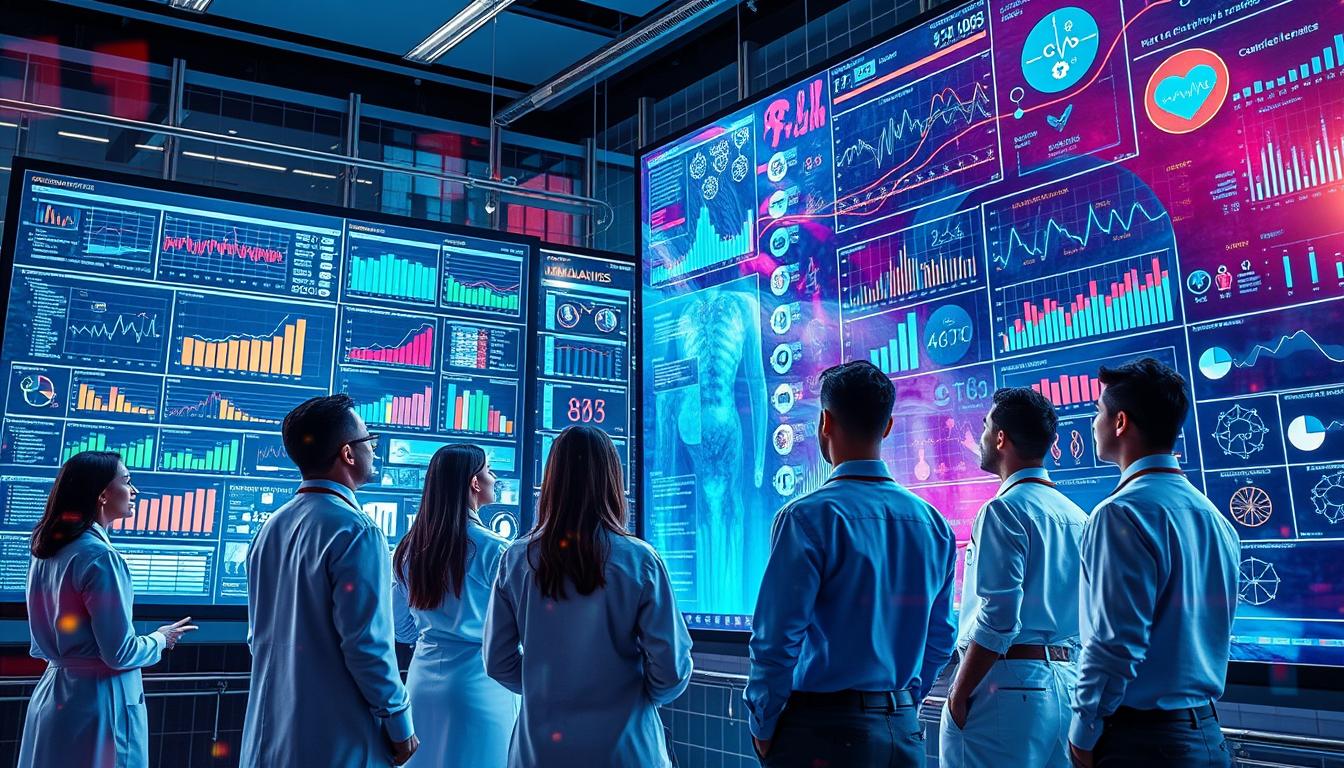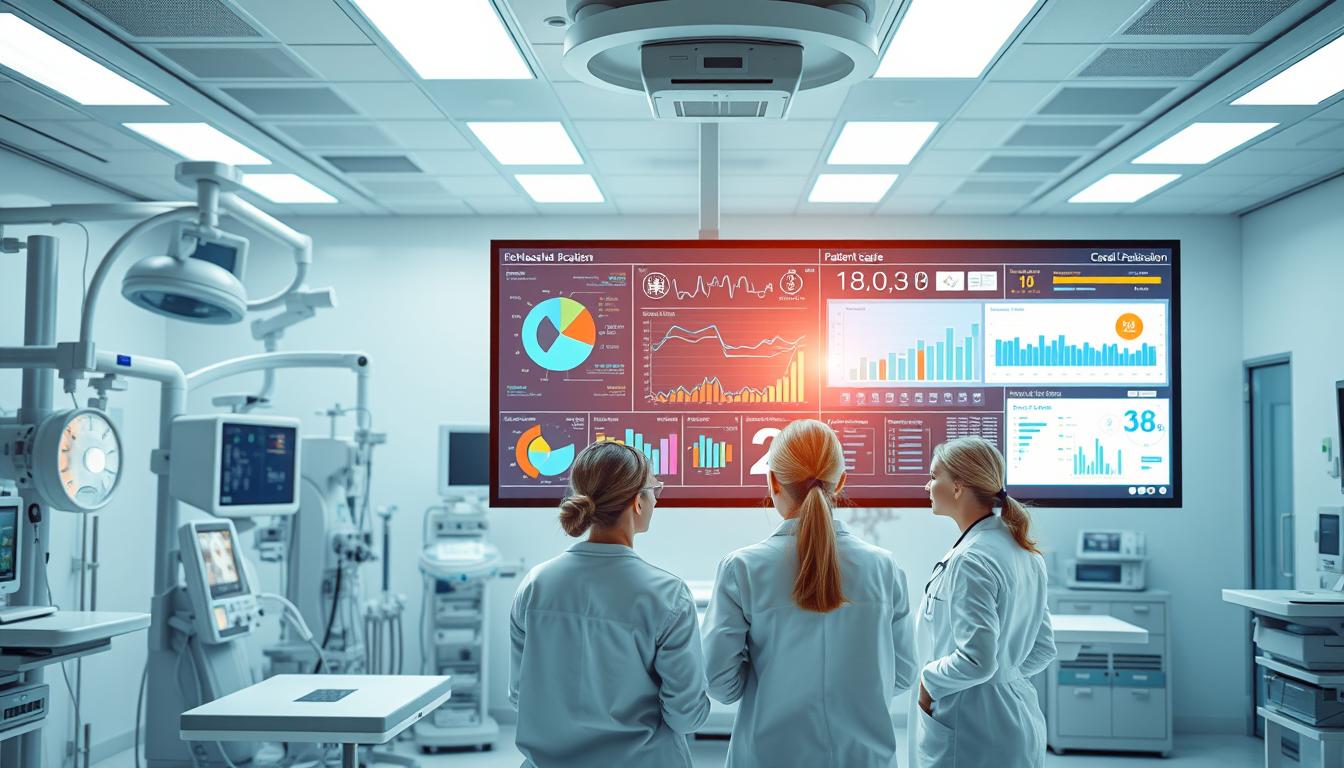Health data analytics is key to better patient care and outcomes. It helps improve care quality, cut costs, and boost patient results. By using healthcare data, we can find important insights to guide decisions and improve health.
With more healthcare data being created, we need a way to analyze it. Health data analytics helps us understand this data and find ways to get better. It lets us know what patients need and how to treat them better.
Introduction to Health Data Analytics
Health data analytics is changing the healthcare world. It helps us improve patient care, lower costs, and make care better. Let’s look at how health data analytics can make a big difference in healthcare.
Key Takeaways
- Health data analytics can improve patient outcomes and reduce costs
- Healthcare data analysis is essential for informing decision-making and driving better health outcomes
- Medical data insights can help us develop more effective treatment strategies
- Health data analytics has the power to transform the healthcare industry
- By using health data analytics, we can make care better overall
Understanding the Fundamentals of Health Data Analytics
It’s key to grasp the basics of health data analytics for accurate analysis. This means knowing about electronic health records, claims data, and medical imaging. These are vital for analytics in healthcare. They help healthcare groups use clinical data analytics to better patient care and cut costs.
Predictive analytics in health is a big part of this. It lets doctors predict patient outcomes and plan better care. To do this, knowing healthcare data well and the analytics methods is essential. Some important methods include:
- Descriptive analytics, which looks at past data
- Predictive analytics, which guesses future outcomes
- Prescriptive analytics, which suggests actions for the future

Understanding these basics helps healthcare groups use health data analytics fully. This leads to better decisions and care for patients. As we explore health data analytics more, it’s clear that using analytics in healthcare well is key for positive change in the industry.
Implementing Health Data Analytics in Clinical Settings
We know how key data-driven healthcare solutions are in improving patient care and cutting costs. By using electronic health records analytics, doctors can get insights into patient care. This helps them make better decisions. Our aim is to help with using health data analytics in clinics, highlighting both the challenges and benefits.
To successfully add health data analytics, understanding the clinic’s workflow and systems is vital. This means:
- Checking the current data setup and analytics tools
- Finding ways to better clinical decisions
- Creating plans for data-based healthcare solutions
By carefully planning the integration, healthcare teams can fully use electronic health records analytics to enhance patient care. As healthcare gets more complex, focusing on data-driven healthcare solutions is key to achieving real results.

Effective use of health data analytics in clinics needs a strong grasp of healthcare and technology. By adopting data-driven healthcare solutions and electronic health records analytics, we can build a more efficient, effective, and patient-focused healthcare system.
Essential Tools and Technologies for Healthcare Analysis
We know how vital technology is for making smart decisions in healthcare. We use many tools and technologies for healthcare data analysis. This helps us get important medical data insights. It’s key to show complex data in a simple and useful way through healthcare data visualization.
Some of the main tools and technologies we use include:
- Data visualization platforms, which provide interactive and dynamic visualizations of healthcare data
- Statistical analysis software, which enables the analysis of large datasets to identify trends and patterns
- Machine learning applications, which can be used to predict patient outcomes and identify high-risk patients
- Integration with electronic health records, which ensures that analytics are used to inform clinical decision-making
By using these tools and technologies, we can understand healthcare data better. This helps us make better decisions.
Data Visualization Platforms
Data visualization platforms are very important for healthcare data visualization. They help us show complex data in a clear and useful way. These platforms offer interactive and dynamic visualizations of healthcare data. They help us spot trends and patterns that might not be obvious at first.
Transforming Patient Care Through Data-Driven Decision Making
The power of health data analytics is changing how healthcare is given. It uses clinical data analytics and predictive analytics in health to make better choices. These choices help improve patient care and lower costs.
Top healthcare groups are using advanced analytics to find high-risk patients and predict diseases. They also tailor treatment plans to each patient. This way, they can help patients sooner and use resources better.
In the future, health data analytics will keep being key in healthcare. As data and tools get better, we’ll find new ways to help patients. By using this technology, we can make care better and put patients first.











Leave a Reply